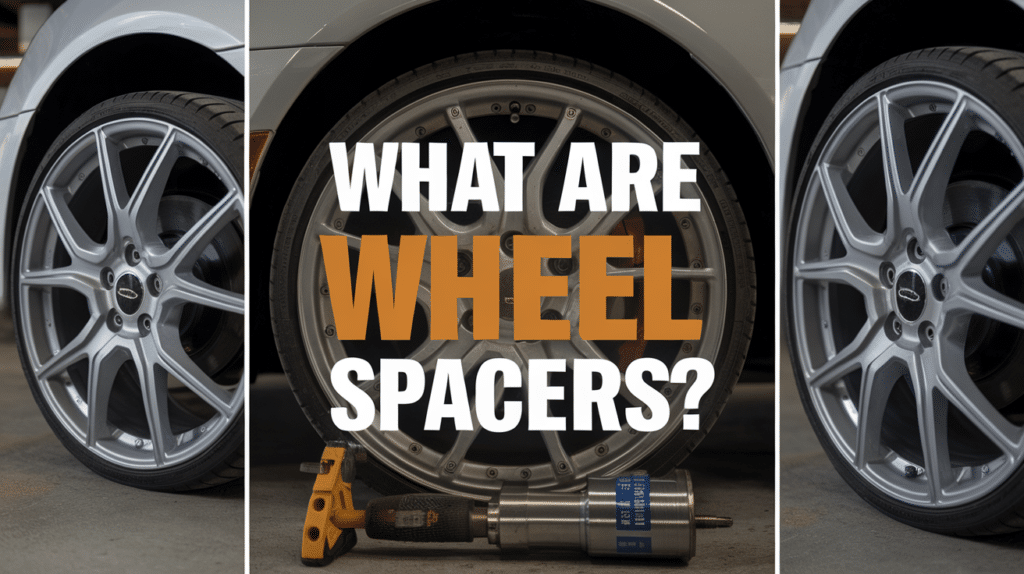If you’re into cars and looking to give your vehicle a more custom look or improve its handling, you might have heard of wheel spacers. These small parts are placed between your car’s wheels and the hub to adjust the space and position of the wheels.
They can help you fit larger wheels or tires, improve your car’s stance, and even make the handling feel better, especially when turning. However, while they offer some cool benefits, knowing how they work and any possible risks is important.
In this blog, we’ll talk about what wheel spacers are, the different types, the advantages and drawbacks, and what to consider before adding them to your ride.
What Are Wheel Spacers?
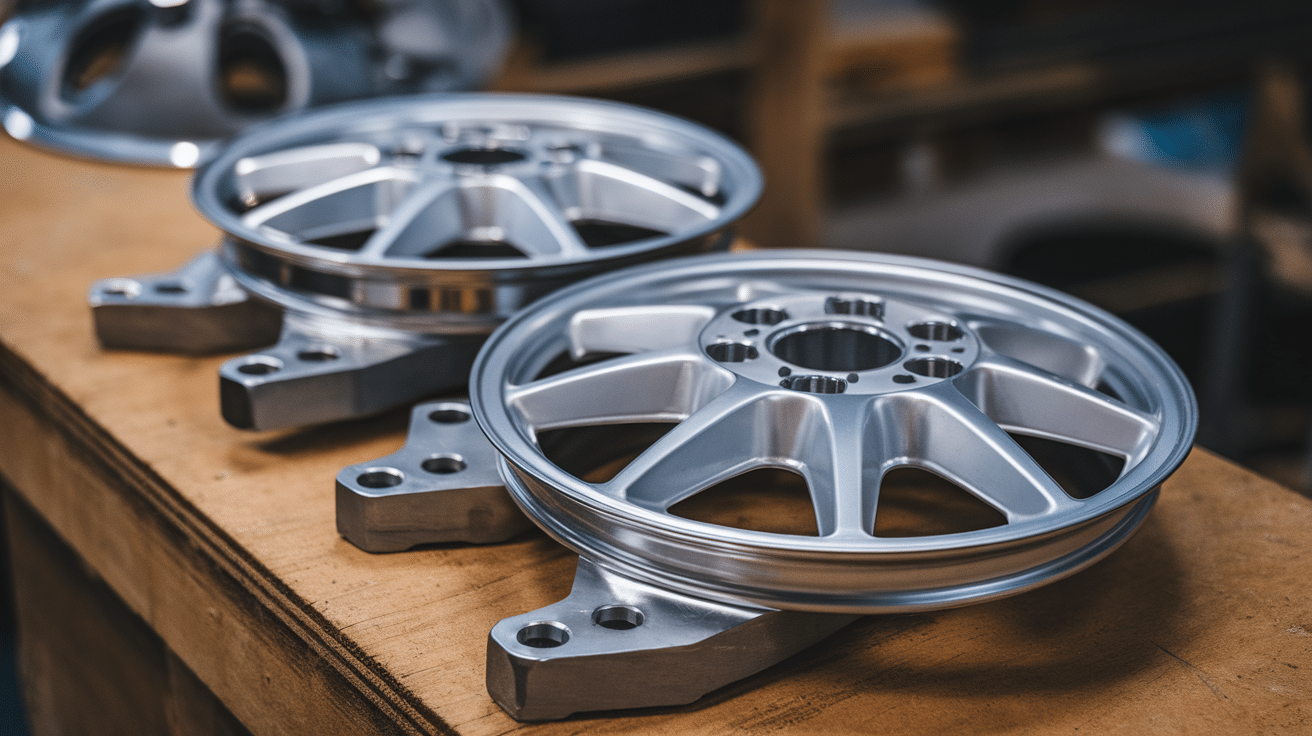
Wheel spacers are small parts that go between your car’s wheel and the hub. They are used to adjust the wheel’s position, making it sit farther out from the car’s body.
This can help if you want to add larger tires or give your car a more aggressive look. Spacers can also improve handling by widening the track width, which makes your car more stable when turning.
They come in different sizes, depending on how much space you need. While spacers can make your car look and perform better, it’s important to make sure you choose the right ones to fit your car correctly.
Benefits of Wheel Spacers
Wheel spacers come with a few great benefits for your car. A look at some of the main reasons why people use them:
1. Better Look
One of the biggest reasons people add wheel spacers is to improve their car’s appearance. By pushing the wheels outward, spacers make the wheels sit flush with the car’s body, giving it a wider, more aggressive stance. It’s a simple way to make your car look cooler without needing new wheels.
2. Improved Handling
Spacers can also make your car handle better. By widening the track (the distance between the left and right wheels), spacers help make your car more stable, especially when turning. This can lead to better control and a more enjoyable driving experience.
3. More Space for Bigger Tires
If you want to upgrade to larger tires, spacers can help by creating extra clearance. This allows you to fit bigger wheels and tires without rubbing against the car’s body or suspension. By using spacers, you can improve the overall look and performance of your vehicle. It’s an easy way to customize your car’s setup.
4. Fixing Fitment Issues
Sometimes, when you upgrade your wheels or tires, they don’t fit quite right. Wheel spacers can help correct these fitment issues by pushing the wheels outward and giving you a better alignment, ensuring a smoother and more stable ride.
Overall, wheel spacers are a simple and affordable way to make your car look better and perform well. However, it’s important to pick the right size and type for your car to get the best results.
Types of Wheel Spacers
There are a few different types to choose from when it comes to wheel spacers. Each type has its way of fitting your car and offering the benefits you want. The main types of wheel spacers are:
1. Slip-On Spacers
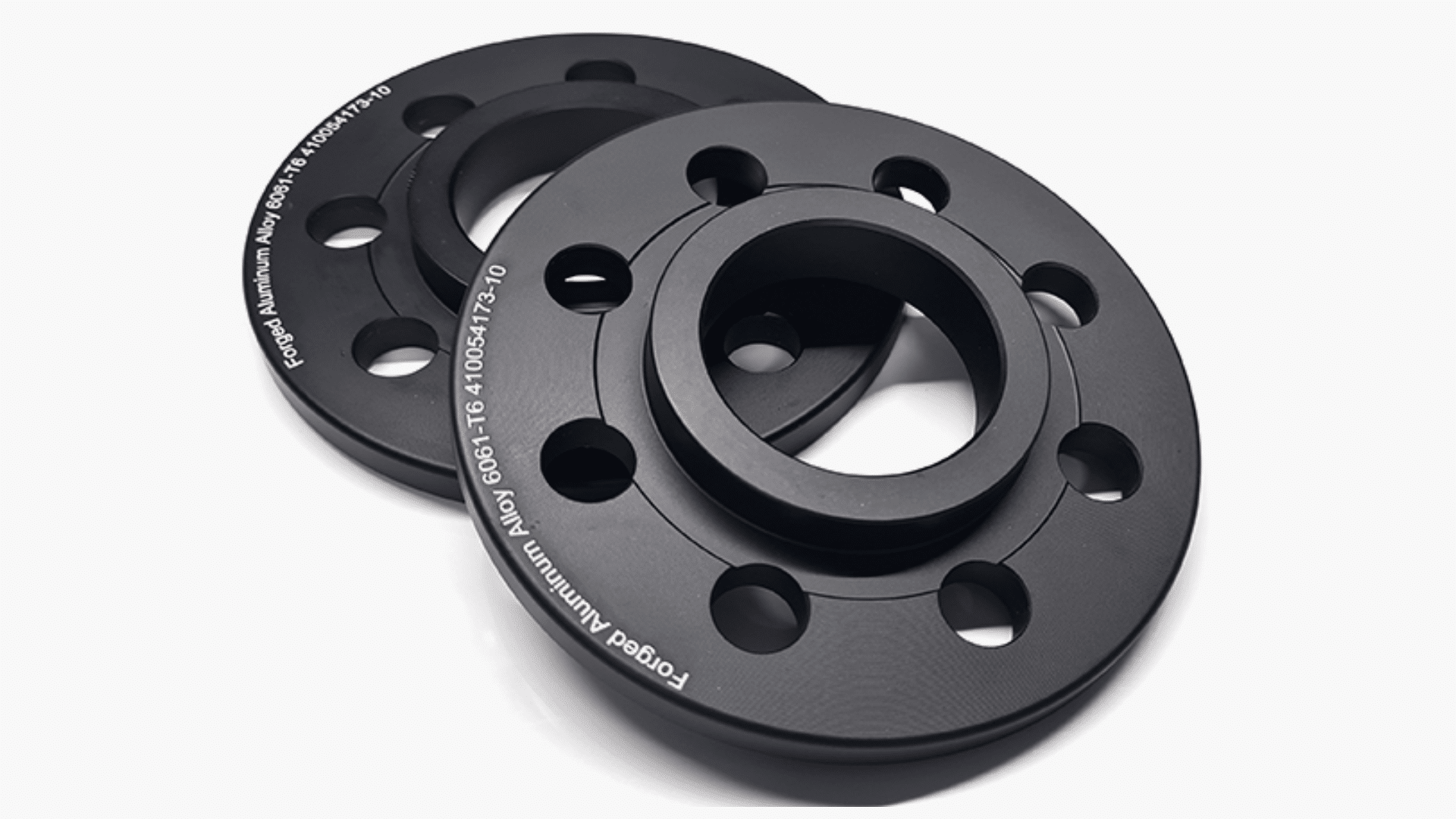
- Slip-on spacers are the simplest type. They slide directly onto the wheel hub, and then you bolt your wheels onto the spacer. They don’t require any special studs to be installed.
- These spacers are easy to install and are often used when you want a small adjustment to the fit of your wheels. However, you’ll need to make sure you have long enough wheel bolts or studs to secure the wheel properly.
2. Bolt-On Spacers
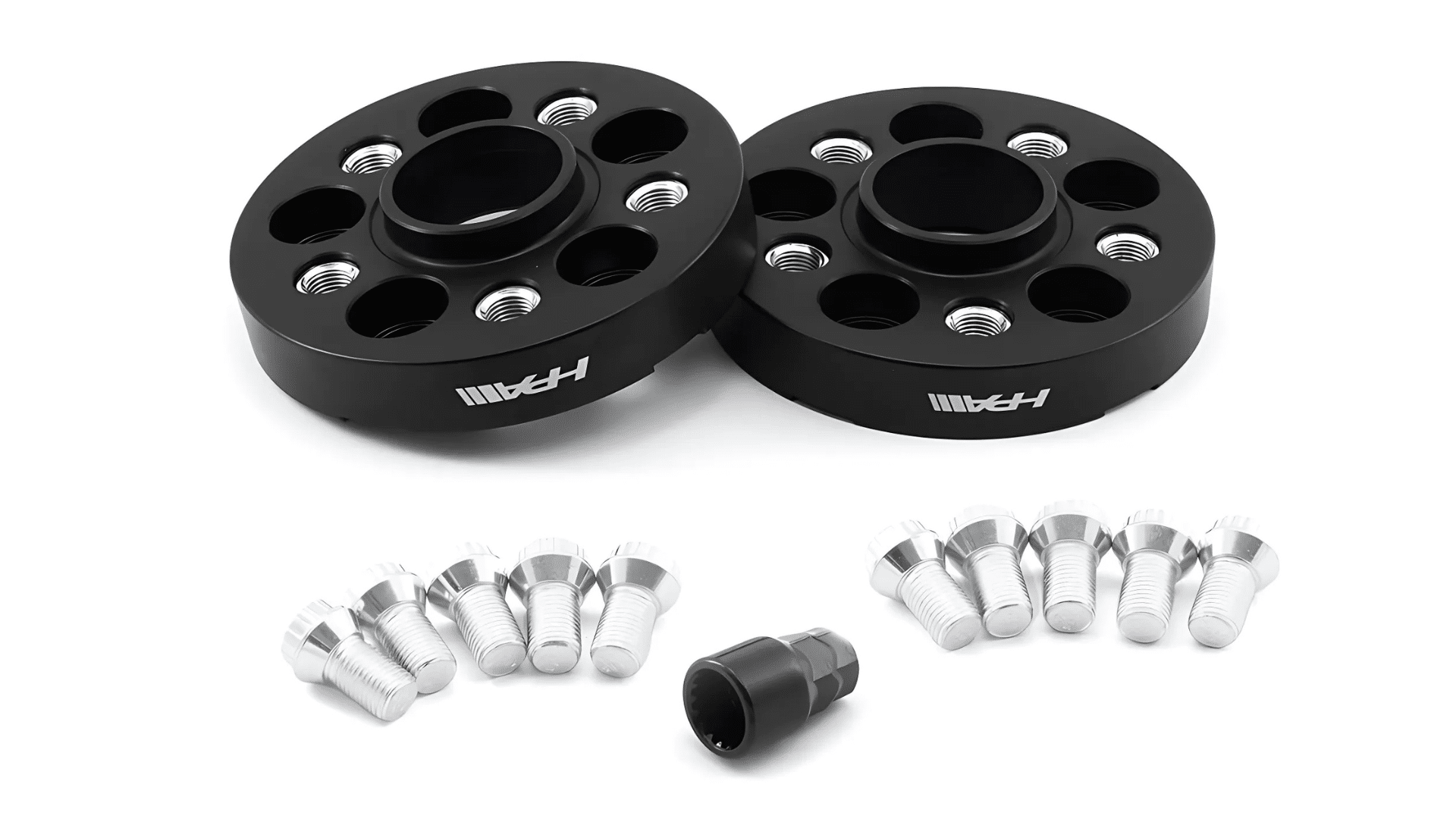
- Bolt-on spacers are a bit more secure than slip-on spacers. These spacers come with their own set of bolts and studs. You bolt the spacer to the wheel hub first, and then you attach the wheel to the spacer using the new studs.
- This extra layer of security makes bolt-on spacers a good option for people who want a stronger, more stable fitment. They are usually recommended for larger spacers or higher-performance vehicles.
3. Hub-Centric Spacers
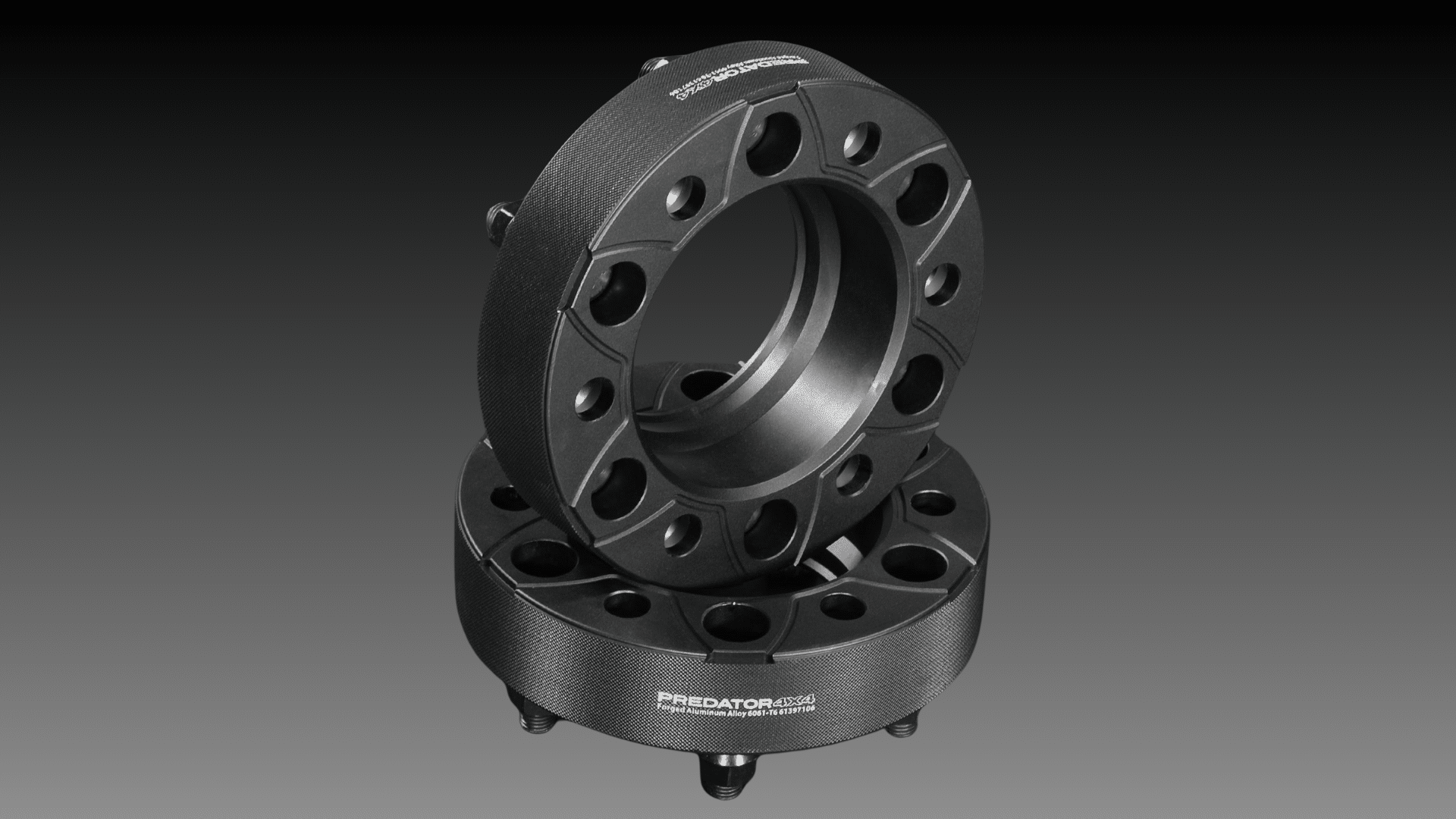
- Hub-centric spacers are designed to fit tightly onto your car’s wheel hub. The spacer has a specific lip that matches the size of your vehicle’s hub, which helps center the wheel perfectly.
- This reduces vibrations and keeps the wheel aligned properly. Hub-centric spacers are the best choice if you want a smooth, stable ride and are worried about vibrations or wobbling.
4. Lug-Centric Spacers
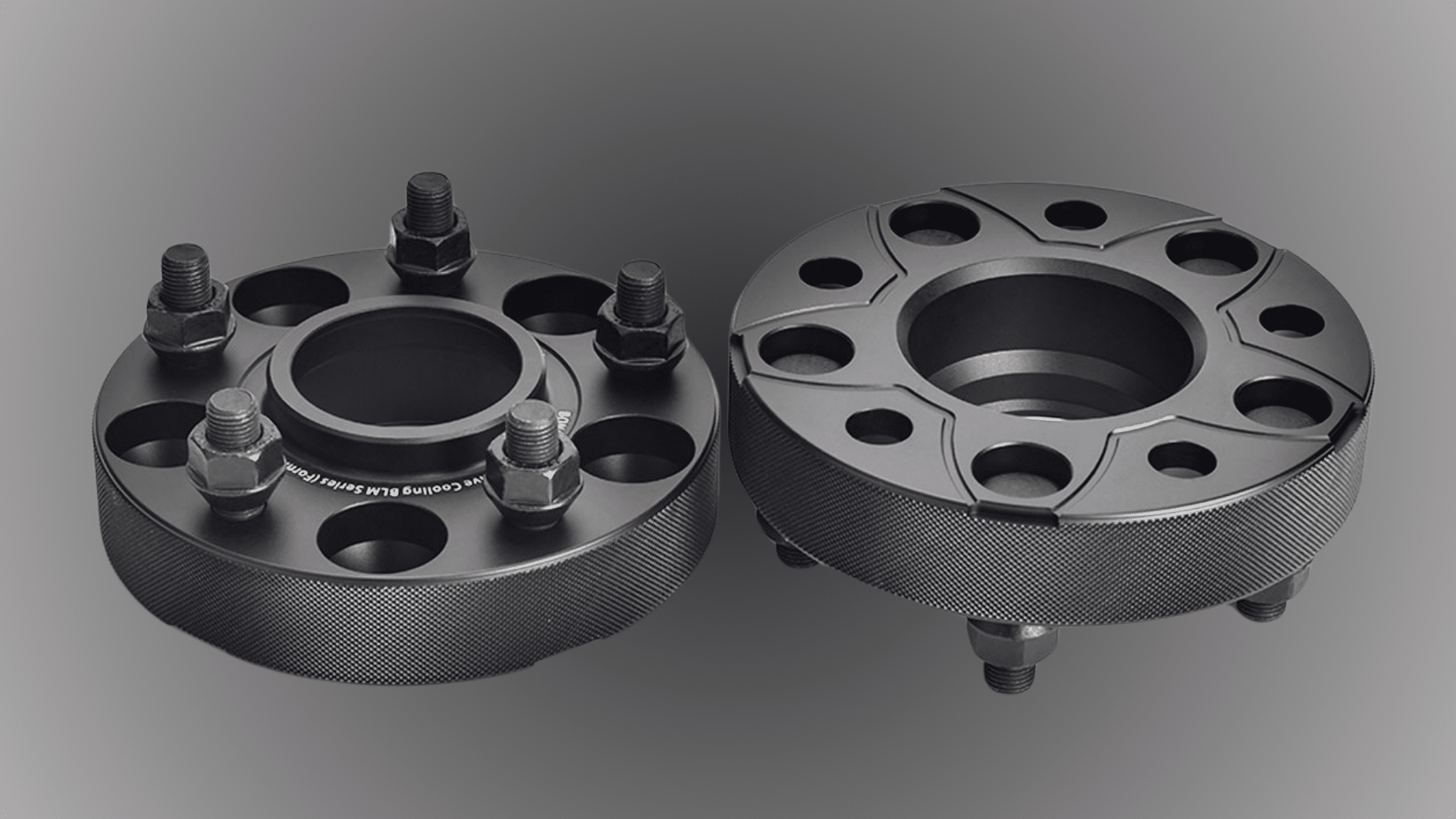
- Lug-centric spacers work by relying on the lug nuts to center the wheel. These spacers don’t have the lip that hub-centric spacers do. While they are often less expensive, they can sometimes lead to less accurate wheel alignment.
- If not installed correctly, they could cause vibrations or uneven wear. It’s important to make sure the lug nuts are tightened properly to avoid any issues.
Each type of spacer has its advantages and is suited to different needs. Whether you’re looking for something simple or more secure, there’s a spacer that can help you get the fit and look you want for your car.
Which Type of Spacer Should You Choose?
When choosing spacers for your car, it’s important to pick the right ones based on your needs and your car type. Here are some key points to help you decide:
1. For a Wider Stance (Appearance)
If you want your car to have a more aggressive look with wheels that sit closer to the edge of the fenders, you’ll want to choose thicker spacers. Thicker spacers, like 10mm to 25mm, will push the wheels outward, giving your car a wider stance. Be careful not to go too thick, which could affect the fit and cause rubbing.
2. For Better Handling
If you’re looking to improve handling, spacers in the 5mm to 15mm range are often a good choice. These spacers can help widen your car’s track, improving stability, especially when cornering. Just be sure to pick the right size to avoid alignment issues.
3. For Larger Tires or Brake Clearance
If you’re upgrading to larger tires or need extra room for bigger brake calipers, you might need spacers that are 20mm or more. Larger spacers can create the necessary clearance for bigger components without rubbing against your car’s body or suspension.
4. Slip-On vs. Bolt-On Spacers
If you only need a small adjustment, slip-on spacers are usually fine. However, bolt-on spacers are the better choice if you’re going with thicker spacers or want extra security. Bolt-on spacers attach securely to your car’s hub with new studs, making them safer for high-performance vehicles or bigger spacers.
5. Hub-Centric vs. Lug-Centric Spacers
For a smoother ride and better fitment, hub-centric spacers are the best. They fit directly onto your vehicle’s hub, reducing the risk of vibration and improving wheel alignment. If you want maximum stability and performance, always go for hub-centric spacers.
How to Install Wheel Spacers
Installing wheel spacers is a pretty simple process, but you’ll need the right tools and time. A step-by-step guide to help you get it done:
Step 1: Gather Your Tools
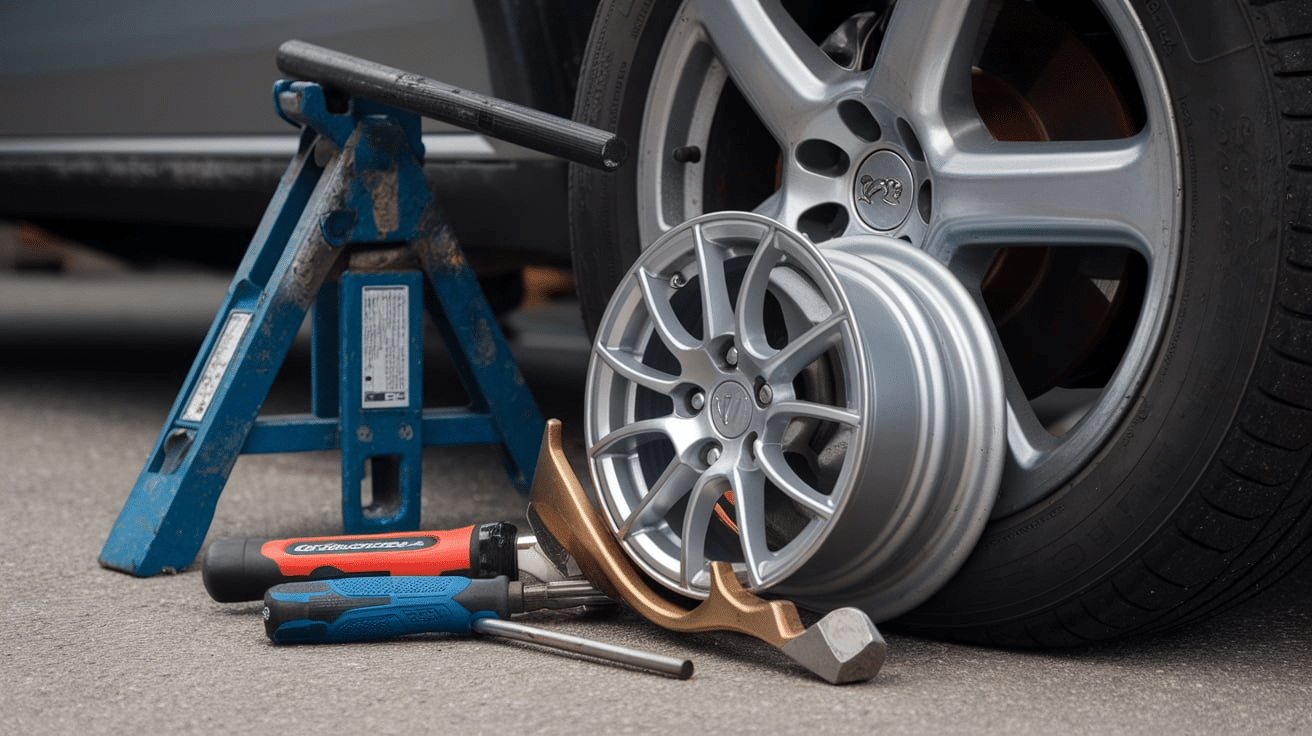
Before you get started, make sure you have all the necessary tools for the job. Here’s what you’ll need:
- Car jack: To lift the car off the ground.
- Jack stands: To securely hold the vehicle once it’s lifted.
- Lug wrench: To remove the lug nuts from the wheels.
- Torque wrench: To tighten the lug nuts to the correct specification.
- Wheel spacers: The correct size spacers that fit your car.
- Socket set: For any additional bolts that may be needed for bolt-on spacers.
Step 2: Lift the Car
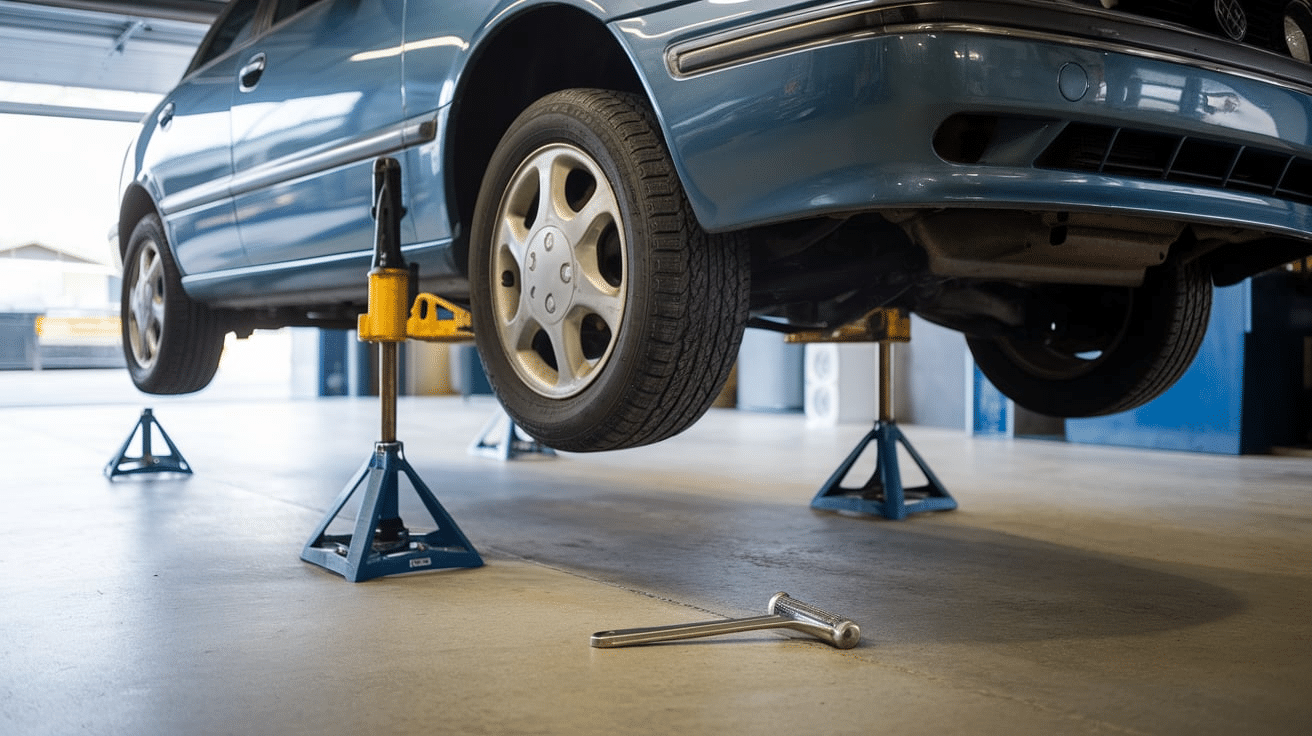
- Start by using the car jack to lift the vehicle. Make sure you lift the car high enough to remove the wheels easily. Once the car is lifted, place the jack stand underneath the car to support its weight.
- Never rely solely on the jack to hold the car while you work—always use jack stands for safety. Double-check that the car is stable before moving on.
Step 3: Remove the Wheels
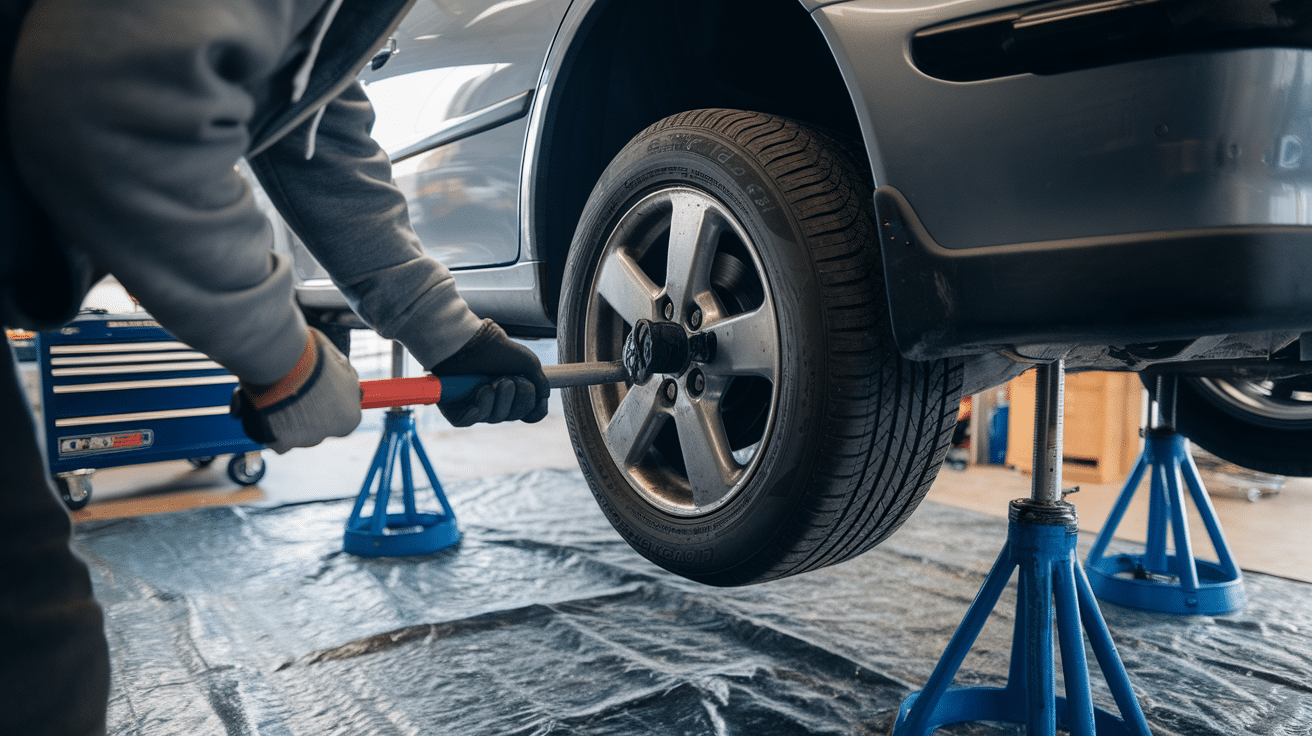
- Next, use the lug wrench to remove the lug nuts from the wheels. It’s a good idea to loosen the lug nuts while the car is still on the ground so the wheels don’t spin when you try to remove them.
- After loosening the lug nuts, lift the car off the ground completely, then finish removing the lug nuts. Take the wheels off and set them aside.
Step 4: Place the Spacers
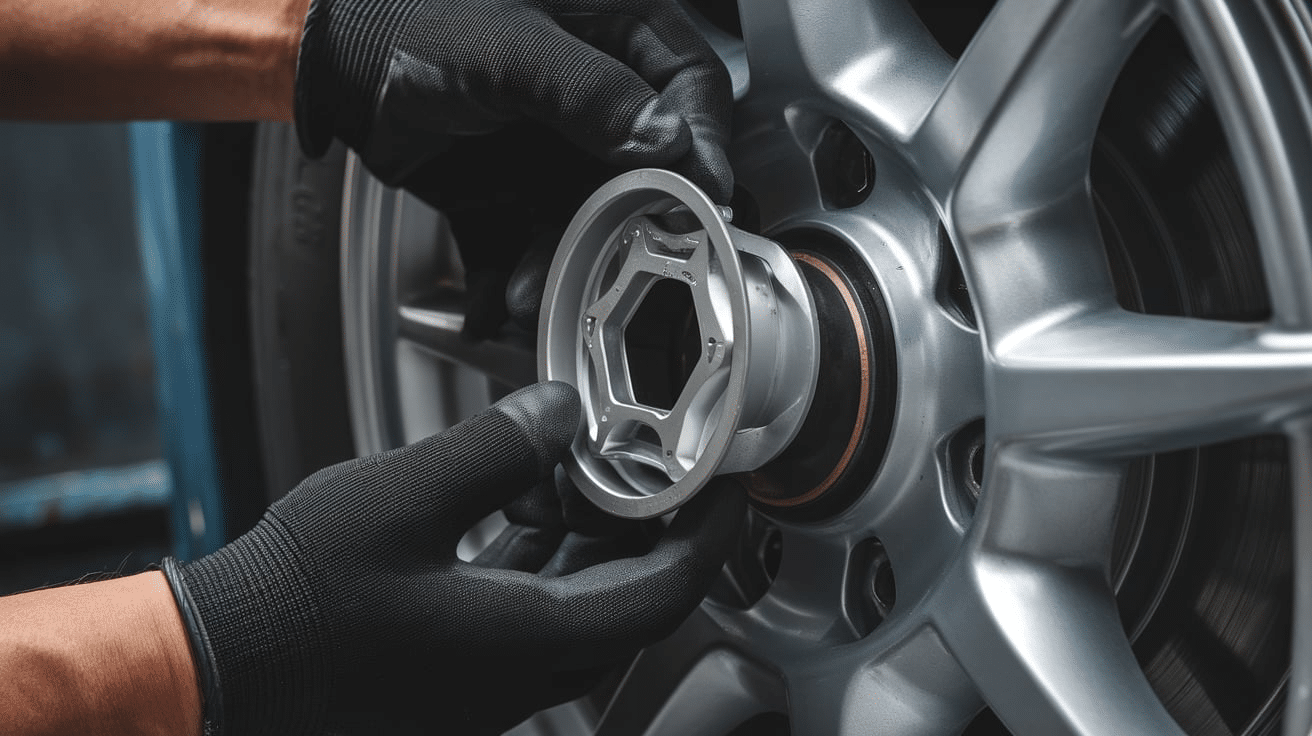
- For slip-on spacers, slide them onto the wheel hub. These spacers don’t require any bolts to attach to the hub, but they need to fit snugly.
- If you’re using bolt-on spacers, you’ll need to bolt the spacers onto the hub using the included bolts or studs. Bolt-on spacers are usually more secure and are ideal for thicker spacers or higher-performance needs. Make sure the spacer sits flat on the hub, and check that the holes align with the wheel bolt pattern.
Step 5: Attach the Wheels
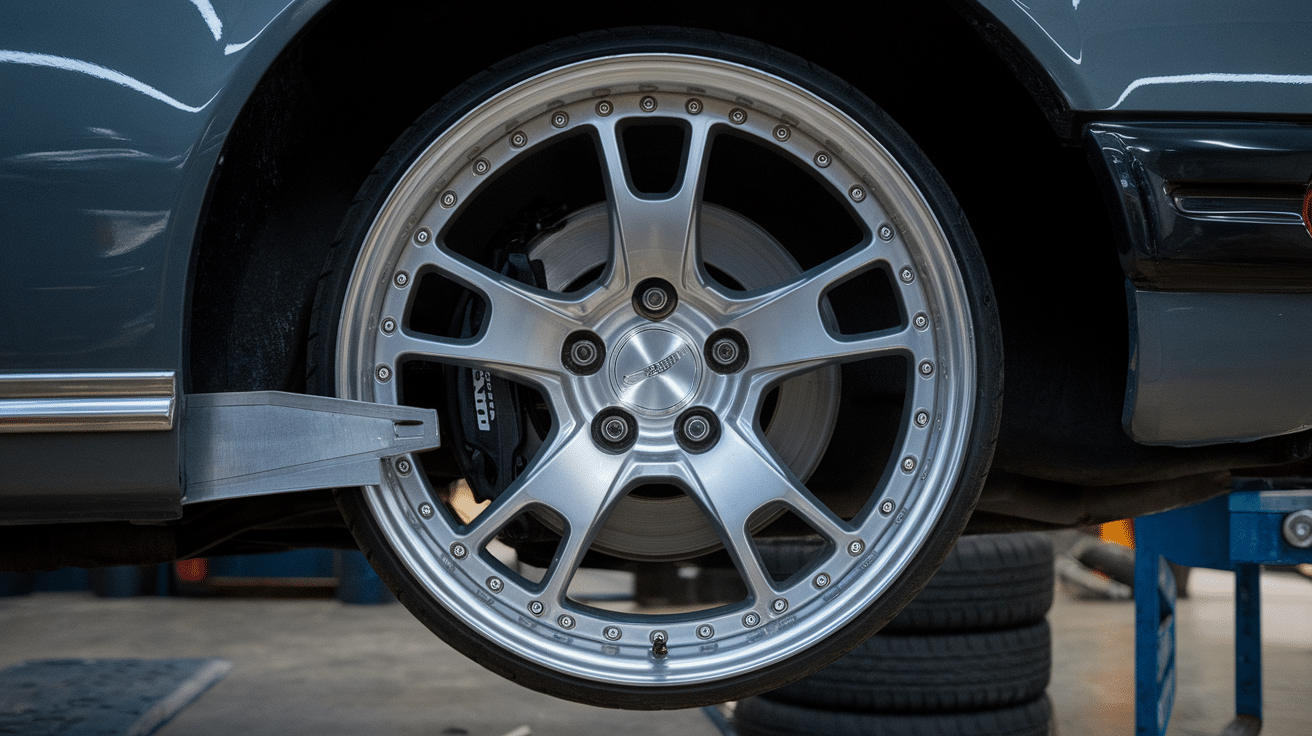
- Once the spacers are in place, it’s time to put the wheels back on. Line up the holes in the wheel with the spacer holes. If you’re using bolt-on spacers, you may need to attach the wheel to the new studs that come with the spacers.
- For slip-on spacers, the wheel should fit over the spacer’s studs without difficulty. Carefully lift the wheel and slide it into place on the spacer.
Step 6: Hand-Tighten the Lug Nuts & Lower the Car
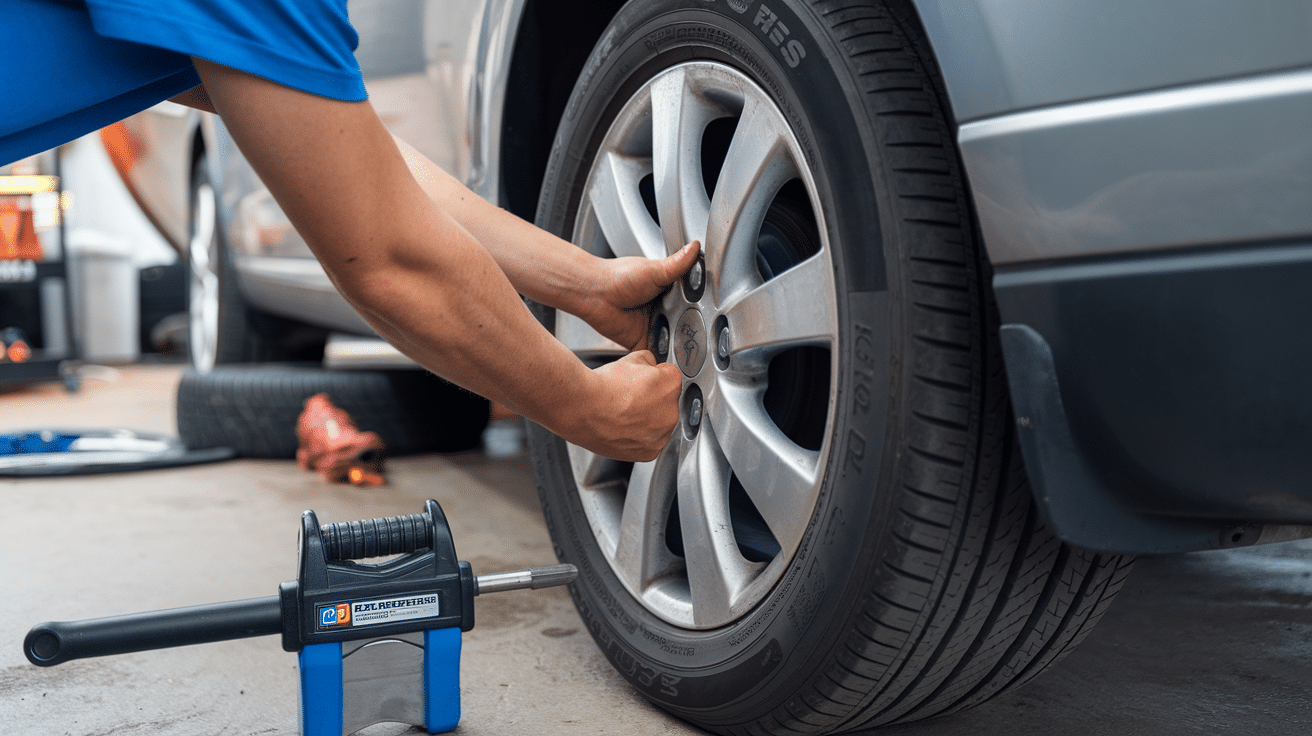
- After placing the wheels on the spacer, hand-tightening the lug nuts onto the wheel. Don’t tighten them all the way just yet. Just make sure the wheel is held in place while you lower the car.
- Next, carefully use the jack to lower the car back to the ground. As the car comes down, the wheels should settle into place. Once the car is fully on the ground, you can properly tighten the lug nuts.
Step 8: Tighten the Lug Nuts with a Torque Wrench
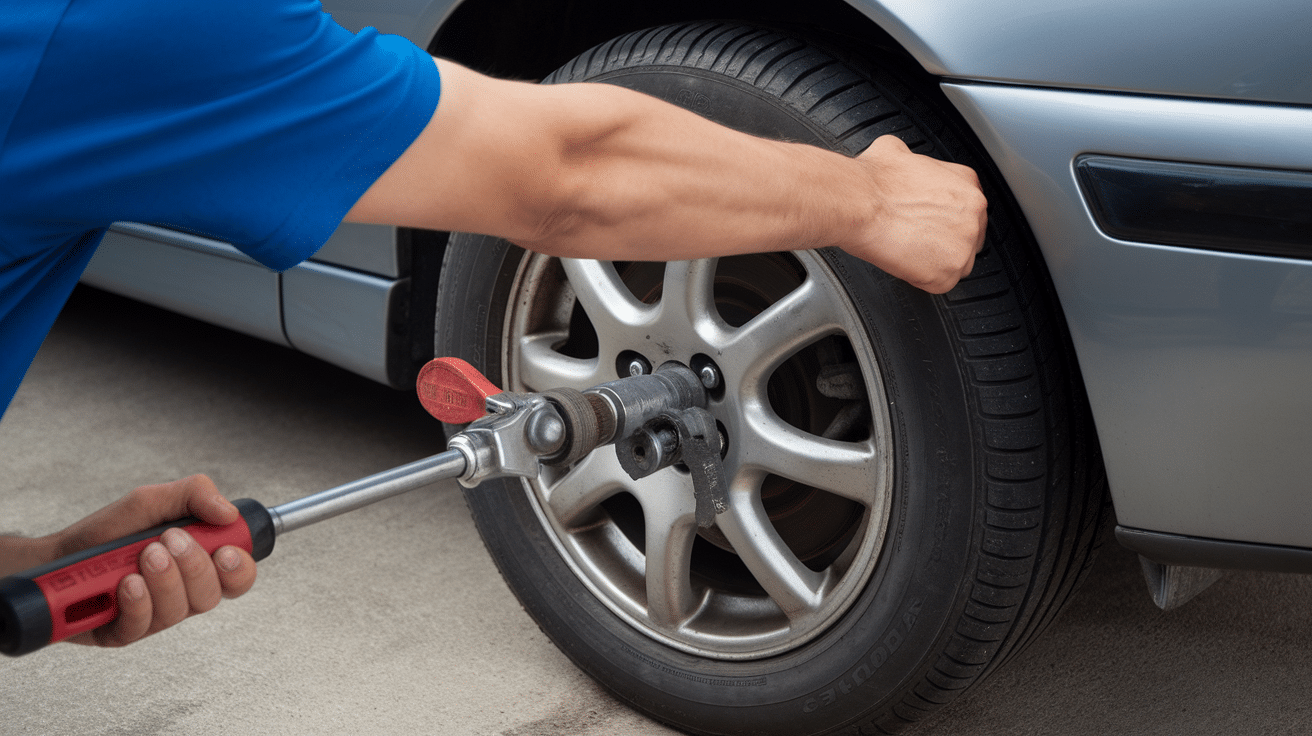
- Now it’s time to tighten the lug nuts. Tighten the lug nuts to the manufacturer’s recommended torque specification using a torque wrench. This ensures that the wheels are securely attached without being over-tightened.
- Tighten the lug nuts in a star pattern for even pressure across the wheel. Start with one lug nut, tighten it a little, and then move to the next, going in a star shape until all nuts are tightened.
Step 9: Check for Clearance
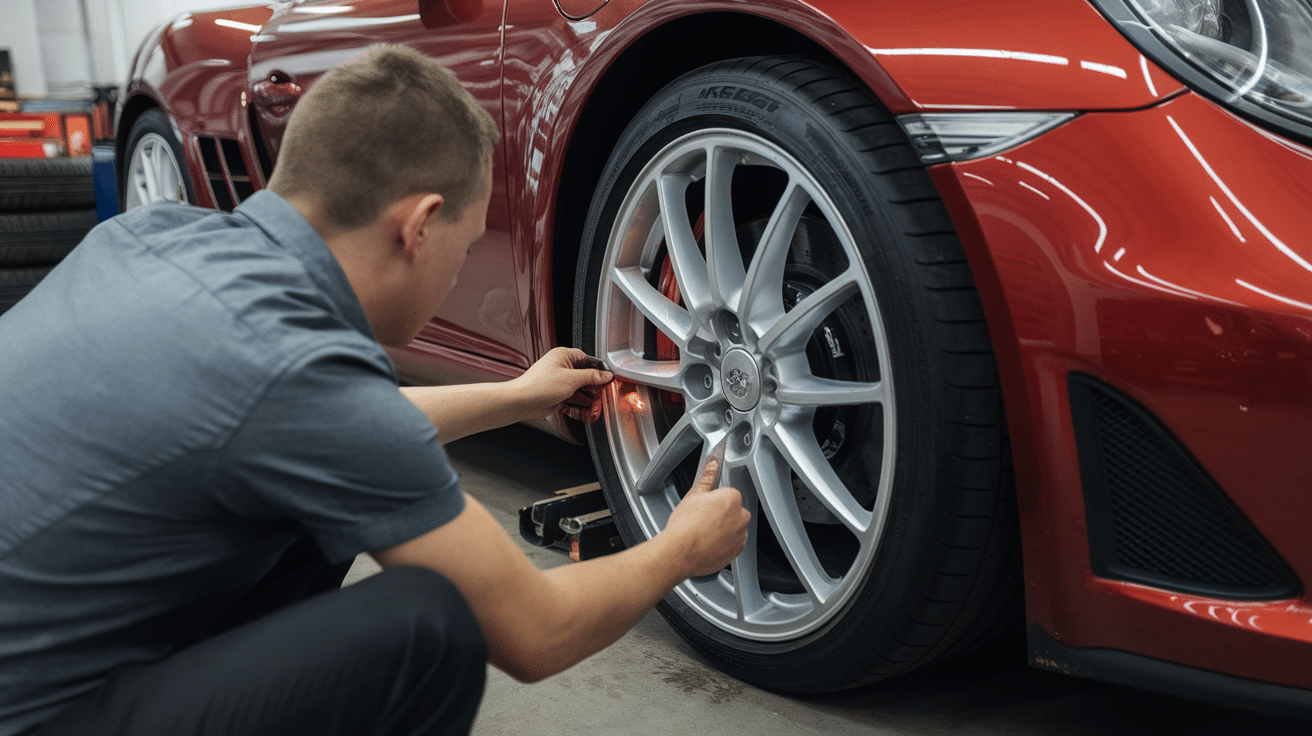
- Before driving, check that the wheels and tires are not rubbing against the car’s body or suspension components. Look around the wheel wells and suspension parts to make sure there is enough clearance.
- If the spacers are too thick or the fit is off, you might need to adjust the spacer thickness or make sure everything is aligned properly.
Once everything looks good, take your car for a short test drive. Pay attention to how the car handles, checking for any unusual noises or vibrations. If everything feels smooth, great! But after your test drive, stop and recheck the lug nuts to ensure they are still tight. It’s normal for them to need a quick re-torque after a short drive.
That’s it! Installing wheel spacers is an affordable and easy way to improve your car’s look and handling. Still, following each step carefully is important for a safe and secure installation. A properly installed set of wheel spacers can make your car safer, smoother, and even more fun to drive!
What to Consider When Installing Wheel Spacers
Installing wheel spacers is a pretty straightforward process, but there are a few things you need to keep in mind to make sure everything fits right and works properly. Here’s what to think about before you get started:
1. Choosing the Right Spacer Size: Spacers come in different thicknesses, so it’s important to measure how much space you need between your wheel and the hub. Make sure to check your car’s specifications or ask a professional.
2. Proper Fitment: Not all spacers fit all vehicles. You need to make sure the spacer is compatible with your car’s hub diameter, bolt pattern, and the size of your wheels. If the spacer doesn’t fit well, it could cause problems.
3. Proper Torque: After installing the spacers and putting the wheels back on, tighten the lug nuts to the correct torque. The wheels could come off while driving if the nuts are too loose.
4. Consider the Type of Spacer: There are two main types of spacers: slip-on and bolt-on. Slip-on spacers are easier to install, but bolt-on spacers are generally safer and secure. If you want more strength and stability, go for bolt-on spacers.
5. Check for Clearance: Once the spacers are installed, it’s important to check for any clearance issues. Make sure the wheels aren’t rubbing against the body of the car or the suspension parts.
Potential Risks and Safety Concerns
While wheel spacers can improve your car’s look and handling, they also come with some risks you should consider.
1. Increased Stress on Suspension: Spacers can push the wheels farther out, which adds extra stress to the suspension system. Over time, this can lead to wear and tear on parts like shocks and struts.
2. Wheel Alignment Issues: Spacers can change how the wheels are aligned, which may affect your car’s handling. This could cause uneven tire wear or make steering less stable.
3. Wheel Bearing Wear: Since spacers add extra pressure on the wheel bearings, they might wear out faster, leading to potential failure if not addressed.
Install spacers properly and check your car regularly to avoid these problems.
Conclusion
Wheel spacers can be a great way to improve your car’s look and performance, but it’s important to understand how they work and the potential risks involved.
They can help make your car look more aggressive, improve handling, and allow for larger tires. However, if not installed properly, they can stress your suspension more, cause alignment issues, or lead to faster wear on your wheel bearings.
Before installing spacers, choose the right size for your car and get a proper fit. When done correctly, wheel spacers can be a simple and affordable way to customize your car and make it stand out.
Frequently Asked Questions
Why use wheel spacers?
Wheel spacers are used to improve the vehicle’s stance, allow for bigger tires, or improve handling by increasing wheel stability during turns.
Are wheel spacers safe?
When installed properly, wheel spacers are safe. However, improper installation or using the wrong size can cause alignment issues, put extra stress on suspension parts, and affect handling.
How do I know what size spacer I need?
The spacer size depends on your goals and your car’s specifications. Measure the space you need, check your car’s bolt pattern, and select a spacer that gives you the right fit without causing rubbing.
How do I install wheel spacers?
Installing wheel spacers involves lifting your car, removing the wheels, placing the spacers between the hub and wheel, and then reattaching the wheels securely. Always tighten the lug nuts to the correct torque.
Are wheel spacers legal?
In most places, wheel spacers are legal, but it’s important to check your local laws. Some regions have specific rules about the size of spacers, and using spacers that don’t meet the legal requirements can result in fines.


